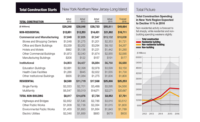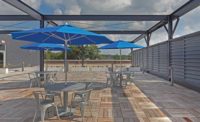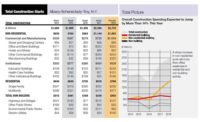City Grill
 Marc J. Landow
Marc J. Landow
Principal
Landow and Landow Architects
Old Westbury, N.Y.
“The 1960s saw a large growth in construction in the area .… As a result, for the past several years we have numerous projects that are additions and/or alterations to existing buildings that were originally constructed 40-plus years ago,” says Landow. “Many of these are for health care or education clients whose facilities ... don’t satisfy today’s code requirements. Health care construction codes have been refined over time with an emphasis on improving the ability of caregivers to address needs of patients or residents.”
He adds: “Many schools, especially in the higher-education setting, have embraced the idea of flexible, collaborative learning spaces with a decentralized focus. The application of technology is a driving factor [with] pods that can be broken down to groups of two to six or more students working together, each with data connectivity built into the furniture, set up around the space. The instructor moves about the room with a portable podium with a laptop. Smart boards can be set up on any wall.”
Biggest challenges? “The physical plant in these facilities has usually received a modest upgrade .... As a result, wholesale updates to building systems are usually a component of these types of projects,” Landow says.
Firm in Focus
JZA+D
20 Nassau St., Ste. 25, Princeton, N.J.
Founder and Principal: Joshua Zinder
Founded: 2006
What’s New: Recently completed examples of the firm’s repositioning work can be seen in Parsippany, N.J., where JZA+D is providing design services for several properties that are part of real estate development group Mack-Cali Realty’s $50-million capital improvement initiative.
Zinder points to the tendency of millennials and younger adults, who together will soon dominate the workforce, to gravitate toward jobs in workplaces that offer an “urban lifestyle” experience that provides social activity combined with several perks like coffee bars, fitness centers and retail.
“Our approach varies depending on the client’s goals,” he says, “but the resulting environment always includes useful and exciting amenities in visually and socially activated settings. This typically means social activity combined with a density of amenities: WiFi, coffee, fitness, retail, etc.”









